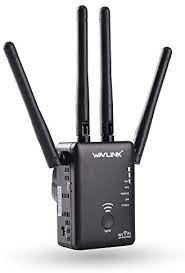There’s one thing common in every factory: when machines stop, everything else does! Over time, even the best equipment eventually wears out. A small leak, a loose belt, or a wrong calibration can reduce productivity. The difference between factories that remain efficient and those that struggle is primarily how they manage their assets on a day-to-day basis.
This is where Enterprise Asset Management (EAM) comes in. It’s not about adding more reports or software layers; it’s about consolidating every maintenance detail into one place, where it’s easy to see, track, and act on. When that happens, maintenance shifts from firefighting to foresight. Machines last longer, teams stay ahead, and downtime finally becomes predictable instead of painful. So, read on for eight simple but powerful ways to make your assets perform like new.
1. Keep Records That Show Real Insights
Maintenance logs aren’t paperwork; they are your plant’s memory. Each job card, inspection, and repair note adds a line to the store of crucial insights. When these details are present in a central system, patterns start to emerge, such as a pump that fails every six months or a conveyor that’s constantly short of parts. With those insights, you can plan more effectively, make smarter purchases, and significantly reduce reactive fixes.
2. Treat Preventive Work as Non-Negotiable
Most downtime isn’t caused by major failures, but rather by small tasks that got delayed. A preventive maintenance schedule should be followed with the same seriousness as production orders. When reminders and work orders are digital and created automatically in your EAM, the team doesn’t have to rely on sticky notes or memory. Consistency is what keeps assets healthy.
3. Listen to the People Who Run the Machines
Operators and technicians are often the first to notice early signs of trouble, such as unusual noises, vibrations, or slow start-ups. Give them an easy way to report those clues without getting bogged down in forms.
A mobile-friendly EAM system lets them log issues on the spot with a quick note or photo. This small change turns informal observations into documented leads for preventive action.
4. Manage Spare Parts Wisely
Too many spares tie up capital; too few halt production. So, the best way to manage them is to ensure visibility. Connect your inventory to your EAM so every repair automatically updates part counts. Over time, you will learn which components fail often, which can be ordered just-in-time, and which don’t justify sitting in storage.
5. Track Equipment Health, Not Just Breakdowns
Good asset management isn’t about counting failures; it’s about tracking how long equipment runs smoothly. Metrics such as mean time between failures (MTBF) and mean time to repair (MTTR) provide a balanced picture. If MTBF is rising, you are improving reliability. If MTTR is falling, your response process is becoming more efficient. When these metrics are visible in your EAM dashboard, you can even celebrate wins and not just chase losses.
6. Let Data Guide Big Decisions
Every plant eventually has to make a difficult decision: continue repairing the machine or replace it entirely. Emotions often cloud that choice. Perhaps the equipment has been in use for decades, or the team has become attached to it. However, data cuts through bias. When your EAM shows that annual repair costs are nearing the replacement value, the decision becomes logical and straightforward.
7. Keep Training Part of the Maintenance Cycle
Even the smartest systems fail if people don’t use them well. Maintenance training shouldn’t stop after onboarding. Short refresher sessions, walk-through videos, or lunch-and-learns keep skills fresh. Ensure that every new hire learns not only how to repair but also how to document. When everyone understands the system, your EAM data stays accurate, and that accuracy leads to better decisions.
8. Review, Reflect, and Adjust Regularly
A maintenance plan built once and never reviewed is like a diet that worked ten years ago! Set aside time each quarter to observe what’s changed; there could be new lines added, older machines phased out, or shifts increased. Use your EAM reports to compare downtime, parts spent, and technician workload. Please consider adjusting your schedules before issues become more challenging to handle.
Final thoughts
The most effective teams don’t just respond fast; they stay a step ahead. They use facts instead of hunches, and they share those facts openly. That’s what effective enterprise asset management delivers; it brings every person, part, and process together into one clear view.
You can’t stop machines from aging, but you can help them age well. With regular practices, reliable data, and a system built to support both, your assets will stay functional far longer than anyone expects. Additionally, your team will have more time to focus on the future rather than dwelling on the past.




